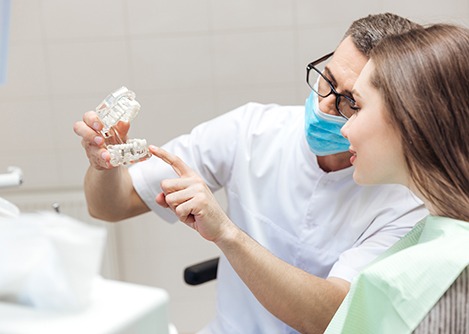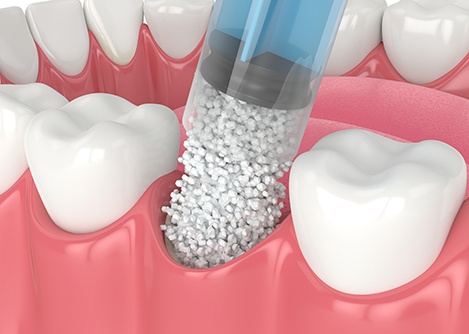If you’re hoping to rebuild your smile with dental implants, one of the key factors that will determine your eligibility is your jawbone density – simply put, if your jaw cannot support your implant posts, they won’t last as long as they should! Fortunately, there’s no better way of reinforcing this jaw tissue than a dental bone graft. To learn more about dental bone grafting, or to schedule your consultation with our office, please don’t hesitate to contact us directly.
What Is a Bone Graft?
A dental bone graft replaces missing or lost bone tissue in your jaw, and this procedure is commonly performed prior to dental implant surgery, or when bone loss is negatively impacting a patient’s oral health. The goal is simple: to increase the volume or density of the jawbone so that it can begin repairing itself. When it comes to dental implants, this is absolutely necessary since the posts need foundational support from the jaw in order to act as replacement tooth roots.
How Does a Bone Graft Work?
During a dental bone graft, a patient’s mouth is numbed before a small incision is made in the gums, to access the jawbone tissue. The gum tissue is gently moved to the side and the area is cleaned and disinfected before the bone grafting material is added. This material can be sourced from a donor or synthetic source, or it might even be taken from another area of your body. Once it’s been placed, it’s carefully covered with a special tissue membrane that will assist with healing. From there, the gum tissue is closed back up and the healing process can begin.
Recovering From a Dental Bone Graft
Initial recovery following a dental bone graft takes around a week, but the graft itself needs at least three or more months to heal, with larger bone grafts requiring even longer. Normal side effects following the surgery include tenderness, swelling, and bruising, and you’ll likely be prescribed antibiotics to help prevent infection and pain relievers to assist with managing your discomfort. You’ll also be given guidelines for how to adjust your diet and lifestyle as you heal. You may also lose small bone fragments from the surgical site during the first few days. All of that said, dental bone grafts have an incredibly high success rate – and are certain to set your dental implants up for resounding success when the time comes!




